Archives
Political drama in Meghalaya
The Congress however being the single largest party with 26 members was given a chance to form the government, but could not muster enough strength to attain the magic figure. It was then only that the Meghalaya Progressive Alliance under the leadership of Dr. Donkupar Roy, took over the reins of the government and administration with a combination of the Nationalist Congress Party, the regional United Democratic Party, backed by smaller parties, the Hills State/Peoples Democratic Party, the Khun Hynniewtrep Nationalist Awakening Movement (KHNAM) and two independents and one BJP.
All along it was smooth sailing for the MPA government even though it had a thin majority. However with the sudden demise of the UDP representative from Umroi constituency of Ri Bhoi, E. K. Mawlong, a green horn in politics - George Lyngdoh, lost by 450 votes to the Congress candidate Stanley Wiss Rymbai.

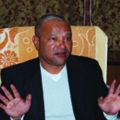
The Umroi victory had served as a morale booster to the opposition Congress which triggered a series of defections from the MPA to the Congress camp. These defections included Paul Lyngdoh of KHNAM who hastily switched sides, Ismail Marak and Limison Sangma and also the Deputy Speaker of the House Sanbor Shullai of the NCP. The Health minister Dr. Advisor Pariong also resigned as a minister but did not formally join the opposition camp.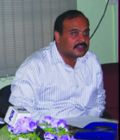
In a swift chain of events, all the five legislators were reported to be missing and to have taken refuge in Guwahati a few days before the begining of the Budget session, in which it was also reported that the Assam Health minister Dr. Himanta Biswa Sharma played an important role in the defection avalanche. In fact, the Assam minister gave a statement in Guwahati saying, “We have done our work in Meghalaya. What happens next will unravel during the floor test the MPA will face on Tuesday”, that was on the 16th of March, a day after the begining of the Budget session.
The entire episode was marked by unprecedented events in the political and legislative history of Meghalaya, being the 21st state in the country attaining full statehood on January 21, in the year 1972. The state’s new governor Ranjit Shekhar Mooshahary, also gave an indication by foretelling of the rough political weather, that he may not read the Governor’s address in the opening day of the Budget session. This is unprecedented as no Governor in the past ever given such an opinion.
The Assembly Speaker Bindo M. Lanong, in a pre-emptive move, issued interim suspension orders to the five missing legislators. Four of them however surfaced during voting of the confidence motion, which was moved by the Chief Minister Dr. Donkupar Roy.
As expected, there was a 27-27 tie in the voting and the Speaker bailed out the government with his casting vote. Immediately the House witnessed an upraring scene, which is also seldom seen, as opposition members protested against the Speaker, followed by a walk out.
The Speaker had maintained that he had acted according to Constitutional provisions and rules and proceedures of the House, including the interim suspension orders he had served to the legislator who had crossed-floor. This is reminiscent to a similar incidence, eighteen years ago, when the then Speaker P. R. Kyndiah presently the Union Minister for Tribal Affairs, had suspended five legislators including present Chief Minister Dr. Don Kupar Roy, who belonged to the regional coalition ministry, the Meghalaya United Parliamentary Party, headed by the late B. B. Lyngdoh, leading to the imposition of President’s rule on October 11, 1991. Similarly on both the occasions, the Congress was in the opposition in the state and was in power at the Centre.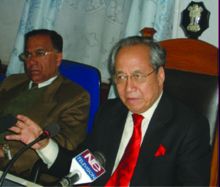
The present battle has however been shifted from the floor of the House. The Governor R. S. Mooshahary had, in an aftermath, recommended President’s rule, which was promulgated on the 19th of January, under Article 356 of the Constitution of India. The Governor justifying President’s rule, said “the elected House was not allowed to function properly and the miscarriage of justice occured, on account of the misinterpretion of the Constitution by the authority”. The Governor also maintained that President’s rule would have no bearing on the state’s budget.
It is also unprecedented that differences arose between the Governor and the Speaker, the Governor who had earlier issued directives on how to conduct the House during the floor test, which included video-tape recoding of the proceedings and to allow all the members of the House to exercise their rights of expression and voting. The Speaker was steadfast in his decision of ordering interim suspension to the defectors, which was imminent when their votes were declared invalid.
It is for the first time also in the nature of the events leading to a tiff between the legislative and the judiciary. The Shillong bench of the Guwahati High Court had issued a show cause notice to the Speaker, seeking reasons for the suspension of the legisators who had challenged the Speaker’s suspension orders in the High Court. In a consequent move the High Court headed by Justice T. Vaiphei issued an interim stay order on the Speaker’s ruling placing firstly on two affected MLAs, Paul Lyngdoh of KHNAM and independent Limison Sangma. The Speaker clarified that “122 and 212 of the Constitution and provisions under the Tenth schedule of the Constutution, bar intervention by courts into the proceedings of Parliament and state assemblies. Under the 10th Schedule of the Constitution, the decision of the Speaker is final and he is not bound by court decision”. 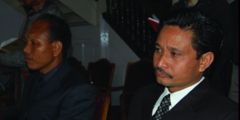
The government, in a counter attack against the imposition of President’s rule, decided to file a petition in the Supreme Court. A team of eight MPA legislators led by the Nationalist Congress Party leader Purno A. Sangma rushed to New Delhi, thereby switching the venue of the political drama to the nation’s capital. P. A. Sangma called upon the President Pratibha Devi Singh Patil, demanding immediate recall of the Governor and said that the Governor’s report was biased. Sangma therefore argued that imposition of President’s rule was unconstitutional. 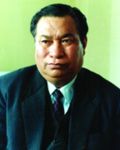
With the Lok Sabha polls just around the corner, whether the political happenings in Meghalaya will have a fall-out in the poll scenario in Meghalaya however do have a significance, which the political parties can not ignore. The North East has a chunk of parliamentarians, who would be called upon to decide the fate of a new government in New Delhi, especially if the mandate given by the electorate results in a hung Parliament.
As far as Meghalaya is concerned, one has to ask when will the curtains fall on this dramatic political and constitutional scenario, in which many of the scenes are unprecedented. In spite of political instability for the last thirty years or so, there has never been a mid-term poll in the state. Even during the first ever President’s rule in October 1991, the promulgation lasted a short time, followed by the formulation of an alternative government led by Chief Minister D. D. Lapang who is now the leader of the opposition. If the state assembly is in suspended animation, so also do the people of the state, who now remain in suspended expectation.

